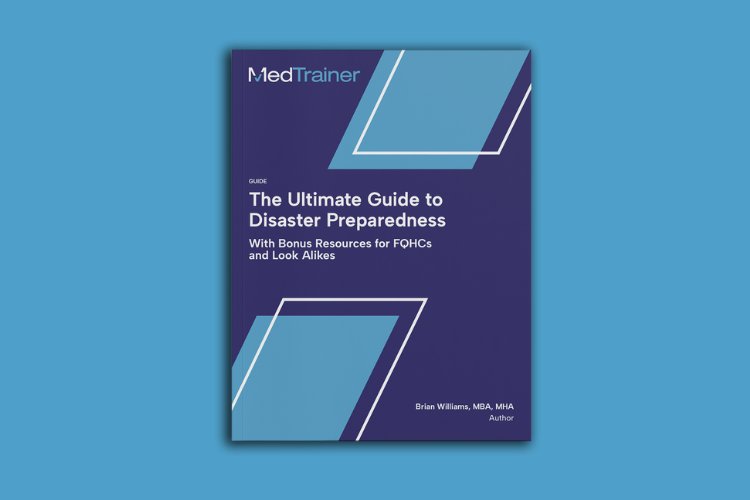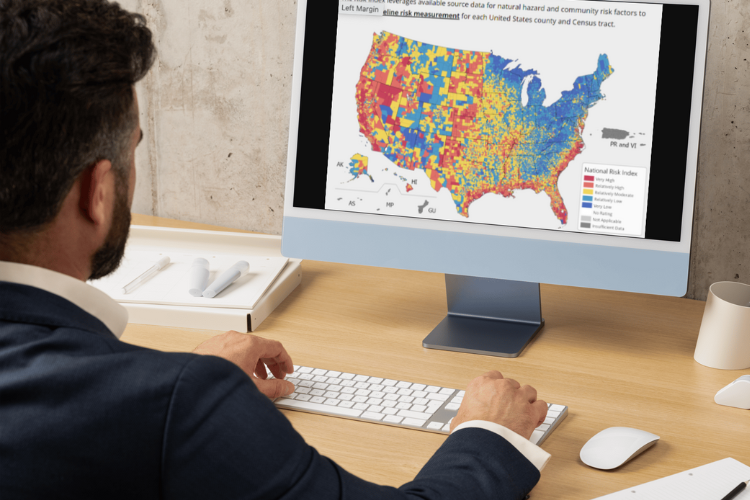Have you accounted for everything in your healthcare disaster preparedness plan?
If you’re like most healthcare organizations, it’s hard to tell. According to a 2024 MedTrainer poll, 23% of respondents feel their organization is unprepared for an emergency and 75% think their organization’s emergency preparedness is just “okay.”
As you may have discovered (hopefully not the hard way), meeting the basic requirements set forth by the Centers for Medicare and Medicaid (CMS) and OSHA should be a bare minimum. To truly be prepared with a multi-hazard approach, you should conduct risk assessments and use all the tools and resources available to you. Good news — there are plenty of tools that work together to provide a very comprehensive look at your risk.
I’ve identified the five most valuable based on feedback from healthcare compliance officers. Before I share those tools, let’s start with the basics.
What Is Required To Meet Healthcare Emergency Planning Requirements?
An emergency plan is required by both CMS and OSHA, but there is no specific emergency plan format requirement such as; page numbers, chapters, or templates. Savvy compliance officers will create one plan and trainings that meet all of the applicable federal and state requirements, rather than creating multiple plans and extra training.
CMS Emergency Preparedness Requirements
The Center for Medicare and Medicaid (CMS) general emergency preparedness requirements aim to safeguard human resources, maintain business continuity, and protect physical resources. The plan must be reviewed every two years, or annually for long-term care facilities. The CMS Final Rule notes four key elements:
- Risk assessment and emergency planning
- Communication plan
- Policies and procedures
- Training and testing
OSHA Emergency Action Plan
OSHA (Occupational Safety and Health Administration) also has specific requirements related to healthcare emergency planning to keep employees safe in the event of an emergency. An emergency action plan must be kept in the workplace and available to employees for review. The plan should include:
- Procedures for reporting an emergency
- Procedures for emergency evacuation and those staying
- Procedures to account for all employees after evacuation
- Procedures to be followed by employees providing rescue or medical duties
- A contact person for emergencies
Healthcare training software is also required both on the organization’s evacuation procedures. It’s very helpful if you’re able to record this training and assign it through your organization’s learning management system (LMS).
Accreditation Organization Requirements
Since accreditation requirements are usually more stringent than federal or state requirements, it’s best to review these standards prior to creating your emergency plans. For example, here’s a look at the training requirements for The Joint Commission.

Get dozens of free resources and tips to plan for emergencies.
5 Valuable Healthcare Disaster Preparedness Tools
Now that you know what is required, it’s time to start identifying your organization’s risks. Technology brings a multitude of innovative tools to your fingertips, helping your organization to be prepared when disaster strikes. The tools below will help from beginning (completing your all-hazard risk assessment) to end (maintaining readiness).
1. FEMA RAPT
FEMA’s (Federal Emergency Management Agency) Resilience Analysis and Planning Tool (RAPT) is a power GIS system that provides a visual representation of geographic areas on a state, regional, or local level. With the ability to add layers, you can visualize the risks to your community and evaluate their potential resilience. Data layers include population characteristics, housing, healthcare availability, transportation needs, and more.
For example, using the consequence management approach, if an emergency prevents a facility (like a federally-qualified healthcare center) from operating their pharmacy, what is the plan? Using RAPT, you could assess the proximity of the closest pharmacies, infrastructure that might help (schools or places of worship), and transportation needs.
2. FEMA National Risk Index
FEMA’s National Risk Index is another GIS tool that helps users evaluate both risk and impcts. By incorporating factors such as risk index, expected annual loss, social vulnerability, and community resilience, you can plan beyond the disaster itself. For example, communities that have experienced many floods are more resilient and have adapted their tools and processes so the flood impacts are usually not as great. However, communities who are likely to flood, but have not experienced many can use the National Risk Index tools to evaluate options following the event.
3. ASPR TRACIE
Continuing the transition from risk evaluation to planning, the U.S. Department of Health and Human Services Administration for Strategic Preparedness & Response (ASPR) has another useful tool, the Technical Resources, Assistance Center, and Information Exchange (TRACIE). Getting its start in 2015, this tool has many preparedness templates available and, “…was designed to meet the information and technical assistance needs of regional ASPR staff, healthcare coalitions, healthcare entities, healthcare providers, emergency manager, public health practitioners. It is also great for others working in disaster medicine, healthcare system preparedness, and public health emergency preparedness.” ASPR TRACIE offers plans, templates, and an exhaustive collection of resources to aid compliance professionals in their planning.
4. Healthcare Learning Management System
Once you’ve created your emergency preparedness plan, you need to provide training — both on preparedness in general, as well as on your organization’s specific plan. Technology can come in really handy so you aren’t spending all your time creating courses and checking to see who has completed them. For example, MedTrainer’s policy experts ensure courses meet healthcare training requirements — with updates several times per year. With a healthcare-specific LMS, you know the content is relevant for your care setting, and you also get the reporting you need to ensure compliance and provide to surveyors.
5. Document and Policy Management Solution
Along with training, your ongoing healthcare disaster preparedness entails making sure the plan is reviewed by and accessible to all employees. Using technology designed specifically for this unique healthcare process can make it much easier. A full-cycle healthcare policy management system enables you to create or upload your emergency plan, secure governing board revisions and approval, distribute to staff, get signatures or acknowledgement, and store for easy employee access. With emergency plans accessible to all staff, employees can reference when disaster strikes — or if a surveyor asks about the plan and they need to reference it to answer.
Rely on Technology To Simplify Healthcare Disaster Preparedness
Disaster can strike at any time and technology gives you peace of mind that your organization has appropriately evaluated risks, planned, and educated staff. All of the tools in this blog post can be used together to increase your efficiency and preparedness.
MedTrainer’s all-in-one compliance platform is built to help healthcare organizations with their unique challenges — including compliance education and policy management.
Watch this two-minute video to see how MedTrainer can help with emergency preparedness.
